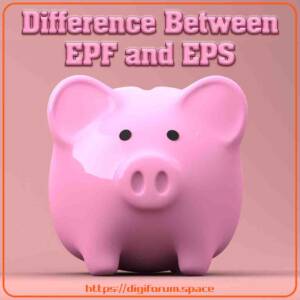What is the difference between EPF and EPS?
EPF (Employee Provident Fund) and EPS (Employee Pension Scheme) are both savings schemes initiated by the Employees’ Provident Fund Organisation (EPFO) of India for the benefit of salaried employees.
EPF – Employee Provident Fund
EPF is a mandatory saving scheme for all salaried employees in India earning a basic salary of up to Rs 15,000 per month. Both the employer and employee make a monthly contribution towards the scheme. The contribution is 12% of the basic salary plus dearness allowance. The contribution is deposited into a provident fund account in the employee’s name, which earns an annual interest. The accumulated funds can be withdrawn after retirement or if the employee is unemployed for a continuous period of 2 months.

EPS – Employee Pension Scheme
EPS, on the other hand, is a pension scheme that is linked to the EPF. The employer contributes 8.33% of the employee’s basic salary and dearness allowance towards the EPS. The scheme provides a pension to employees after they retire. The pension amount depends on the years of service and the average salary of the employee in the last 10 years of service. The scheme also provides a life insurance cover of up to Rs. 7 lakh in case of the employee’s death while in service.
Conclusion –
EPF is a mandatory savings scheme for employees, while EPS is a pension scheme that provides a pension to employees after they retire. EPF is funded by both the employer and employee, while EPS is funded only by the employer.

